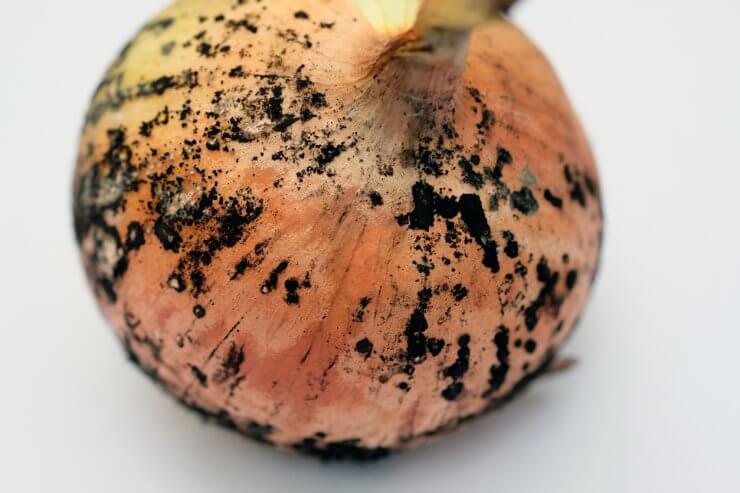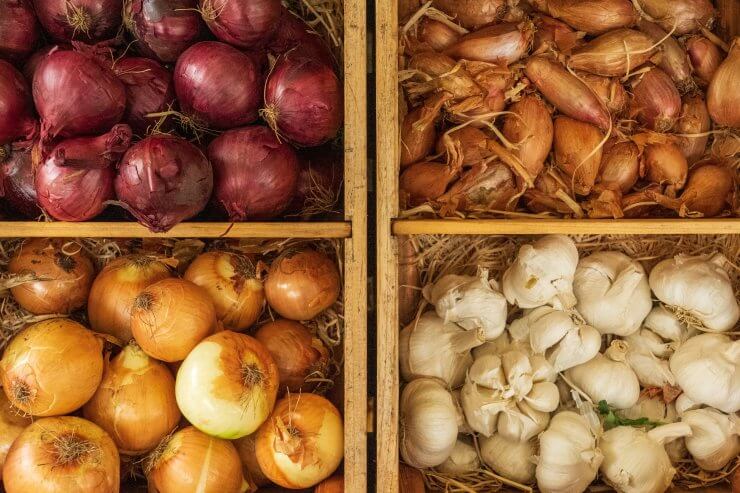
One summer I lost half my onion harvest to black mold because I rushed the curing process. After many years of growing alliums, I should have known better – but that’s how gardening goes sometimes. We learn from our mistakes, and now I have a foolproof system that keeps my onions fresh and safe for up to eight months.
The science of onion storage fascinates me. These remarkable bulbs have evolved natural antimicrobial compounds that help them survive long periods in dormancy. When we properly cure and store our homegrown onions, we’re essentially working with these natural preservation mechanisms rather than against them.
The curing process is critical for long-term storage success. During curing, the onion’s outer layers dry out, creating a protective wrapper that prevents pathogenic bacteria and fungi from entering the bulb. But here’s something many gardeners don’t realize: this wrapper contains quercetin, a flavonoid compound that actively fights microorganisms.
Start by harvesting your onions when about 80% of the tops have fallen over naturally. Gently pull them from the soil on a dry morning, and resist the urge to brush off the dirt – that comes later. Lay them out in a single layer in a well-ventilated, shaded area where temperatures stay between 75-80°F (24-27°C). I use my covered porch, but a garage or barn works well too.
Proper airflow is crucial during this stage. The necks need to dry completely, which typically takes 2-4 weeks depending on humidity levels. You’ll know they’re ready when the outer skins are crispy and the necks are tight and dry. If you’re growing in a humid climate, setting up a fan can prevent the dreaded black mold I encountered.
Different onion varieties require slightly different curing times. Sweet onions like Walla Wallas have higher water content and thinner skins, so they’ll need extra attention during curing. Storage-type onions like Red Burgundy or Yellow Globe have thicker skins and lower water content, making them naturally better suited for long-term storage.

Storage Secrets for Maximum Shelf Life
Once your onions are properly cured, it’s time for storage. Temperature and humidity are your two main concerns here. The ideal storage temperature is between 32-40°F (0-4°C) with relative humidity around 65-70%. Higher humidity promotes rot, while lower humidity causes dehydration.
Here’s something fascinating about onion chemistry: at these temperatures, the bulbs enter a state of dormancy where their metabolic processes slow dramatically. This prevents sprouting and preserves the sulfur compounds that give onions their distinctive flavor and antimicrobial properties.
Storage life varies significantly by variety. Long-day storage onions can last 6-8 months under optimal conditions. Sweet onions, with their higher water content, typically only last 1-3 months. I organize my onions by variety and use the sweet ones first.
Signs Your Onions Need to Go
While many people worry about mayonnaise or eggs causing foodborne illness in dishes like potato salad, raw onions can actually be a significant culprit in food poisoning cases. Their porous, layered structure creates an ideal environment for bacteria like Salmonella, E. coli, and Listeria to thrive, especially when the onions are cut or have been damaged. The high moisture content between layers combined with onions’ sulfur compounds can support rapid bacterial growth at room temperature. That’s why food safety with home-stored onions requires particular vigilance and a clear understanding of when to discard them. While our senses evolved to help detect spoiled food, bacteria can multiply to dangerous levels before visible signs appear, so proper storage from the start is crucial.
- Any onions showing signs of black mold (it appears as a dusty black coating) should be discarded immediately, as some molds can produce harmful mycotoxins.
- If you spot green sprouting from the top, that’s not necessarily dangerous, but it indicates the onion is using its stored energy to grow rather than stay dormant – these should be used quickly or composted.
- The most concerning sign is when onions develop soft, brown spots or feel squishy when gently squeezed. This often indicates bacterial rot, which can cause foodborne illness if consumed. An occasional translucent scale (layer) isn’t harmful, but if multiple layers show this characteristic, or if there’s an off-putting smell beyond the typical onion scent, it’s time for the compost bin.
- Remember: when in doubt, throw it out. The minimal cost of replacing an onion isn’t worth risking your health.
Never store onions in plastic bags or sealed containers. They need air circulation to prevent moisture buildup that leads to rot. I use mesh bags hung from hooks in my cellar, but old pantyhose works surprisingly well too – just tie knots between each onion to keep them separated.
Checking your stored onions regularly is essential. I inspect mine every couple of weeks, looking for any soft spots or early signs of sprouting. Remove any questionable ones immediately – one rotting onion can quickly spread problems to its neighbors.
One of my favorite aspects of proper onion storage is how it connects us to traditional food preservation methods. Our ancestors developed these techniques through careful observation and trial and error, and modern science has confirmed their wisdom. When we store our onions properly, we’re participating in a timeless practice of food security and self-sufficiency.
Ready to grow the perfect storage onions? Check out our comprehensive Onion Gardening Guide to master every step from seed to storage. You’ll learn expert techniques for selecting the best storage varieties, maximizing bulb size, preventing common diseases, and ensuring your harvest lasts through winter. Transform your garden into an onion-growing powerhouse!
I’d love to hear about your experiences storing onions from your garden. What varieties have you had the most success with? Have you discovered any unique storage solutions that work particularly well in your climate? Share your stories in the comments below – there’s always something new to learn from fellow gardeners, and your experience might help someone else avoid the mistakes we’ve all made along the way.


 Previous
Previous
